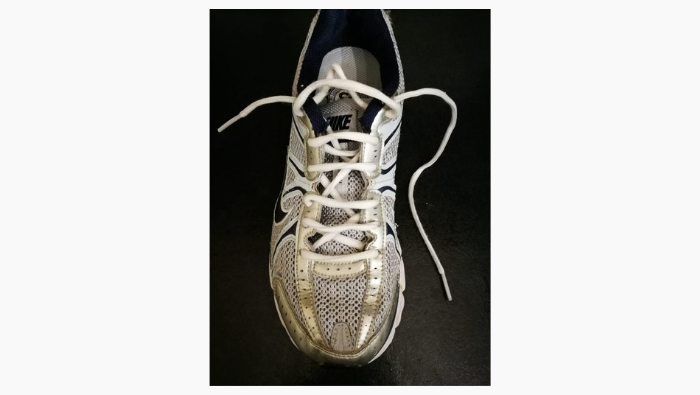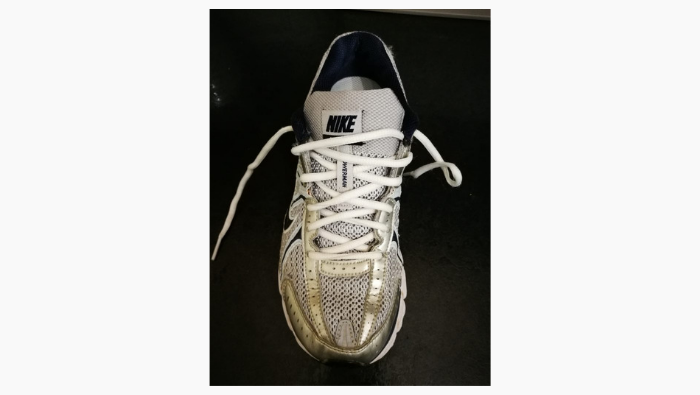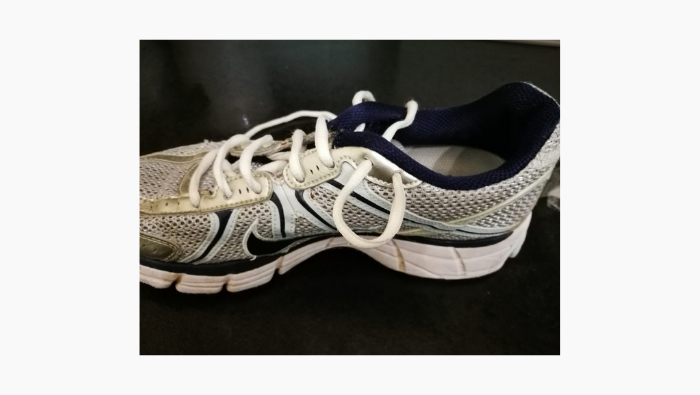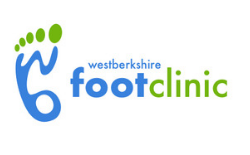Running a marathon? Do you have foot pain when running? Taking up running and want to look after your feet?
Read on to find out how to look after your feet before and after a marathon or long run!
Blisters, black or bruised nails, losing toenails you name it I hear and see it all in the weeks after the London Marathon! So, can we prevent these problems all together? If we do suffer from them, what can we do to treat them?
Finding the right trainers
Trainers are the biggest key to preventing foot pain when running. It is thought that about 65% of sports people choose the wrong shoe for the training they are doing and don’t replace trainers often enough! Ill-fitting trainers cause a majority of the problems we see on the feet after a marathon. Buy them too small, they will rub and cause blisters, too big and the friction from your feet moving around in the shoe will cause damage to the toenails. If you are planning to run a fair distance the age old saying ‘you get what you pay’ comes into it. I would recommend finding a specialist running shop who can measure your feet and assess which style of trainer would be best for your foot shape and running style. Yes, these come at a higher price to those on sale at the local discounted sports shops but they should last you more miles and make your feet last longer too! I recommend up and running local to the clinic.
Laces
Do your shoe laces regularly come untied? Have you struggled with foot pain when running or find your trainers never right quite right? Were you aware there are many different ways to tie your shoe laces? Check out these three lacing styles and ways they can prevent foot pains.
Straight bar lacing
Try this lacing style if you need to create more room for the toes in your shoe

Criss-cross lacing
Try this style if you have wide feet or high arches

Loop lacing lock
Ever wondered what that extra hole is for at the top of the shoe? This is it! If you suffer from heel slipping or damage to toes when running this one is for you. Create a loop with the toe holes at the top of the shoe, pass the ends of the laces through this, pull down to tighten then tie shoe lace as normal.

Here are our top tips for choosing the best trainer:
- Don’t buy shoes to multitask – if you are running outside on the road get a road trainer, if you are going cross country you will require more tread to the sole.
- Use speciality shops out there for advice – you may find the trainers cost more but they will last you longer and cause less problems with your feet in the long run
- Have your feet measured frequently – our feet do change size and shape throughout your life!
- Buy trainers at the end of the day when your feet are most swollen!
- Replace your running shoes after 350-400 miles
- Tie your laces correctly!
- Don’t wear new trainers for the main event – ensure you have trained in them first!
Socks
As key as the right fitting trainers are to a runner, finding the right socks can prevent foot pain when running. Many specialist running shops will sell correct socks. It is important to find a material which draws any sweat away from your skin as any moisture left on the feet is going to create a frictional force which can lead to blisters. Running trainers often have an element of compression to the skin which will help with comfort levels during your run.
Blisters
Blisters can appear at any time during your run – usually early on meaning you have to limp through the rest of the race! They are the most common cause of foot pain when running I see in clinic. They are easily avoided with correctly fitted running shoe and correct socks. However, it is worth noting not everyone has the most perfect of foot shape and lumps and bumps can irritate. If your foot has some bony bits that you think may rub you can protect these with plasters such as compeed which stay on better than normal plasters and provide longer protection. Avoiding moisture in the skin will also help to avoid these. This can be managed by drying your feet before you run and using talcum powder when running. Talcum powder absorbs moisture/sweat and acts as a buffer between your skin and socks therefore forming a protective layer from rubbing.
What do you do if you get a blister?
If you feel a blister during your run, plasters may help although I would suggest compeed will stay on better and form a better protection. If you take your trainers off and find blisters try not to pop them. Apply an antiseptic and cover with a sterile bandage. Normally blisters will self-absorb the fluid within it and dry up naturally. If it doesn’t or remains too painful seek advice from a podiatrist who can drain the blister in a sterile environment and manage the wound underneath.
Damaged toenails
Often people suffer with black toenails whilst running. This is usually bruising under the nail and often caused by pressure and friction such as when shoes are too big and there is too much movement of your foot within the shoe. Bruising of the nail will unfortunately remain until the nail has grown out – sometimes up to 12 months in the case of the big toe! On occasion, as your new nail grows under the bruised nail this may push the damaged nail off and it will appear you are losing the nail. If this happens it is best to seek help from a podiatrist or chiropodist to cut the nail back safely and smooth off any rough edges which may be prone to catching on socks etc. In some cases, this damage to your toenail(s) may result in more permanent damage such as thickened nails or ingrowing toenails. Your podiatrist can help manage these conditions also.
Foot pain
Foot pain isn’t a normal side effect of running, although normal strains can happen, pain which isn’t improving with rest, ice, compression and elevation after a couple of weeks needs to be checked by a podiatrist. Most importantly don’t run through the pain of strains without assessment by a podiatrist or you may do more harm than good!
Top tips for preventing blisters and toenail problems
- Ensure wearing correctly fitted shoes
- Wear running socks to draw moisture away from skin
- Dry your feet well before running
- Apply talcum powder to your feet before running to draw moisture away and prevent friction
- Correctly lace your trainers as above
- Wear compeed plasters on areas prone to rubbing or blistering
- Seek advice from a podiatrist before your run if you have any niggles or pains
- Seek advice from a podiatrist after your run if you suffer from any pains or blisters or toenail problems.
If you are running the London Marathon, or any other marathon over the coming months – Good Luck!


